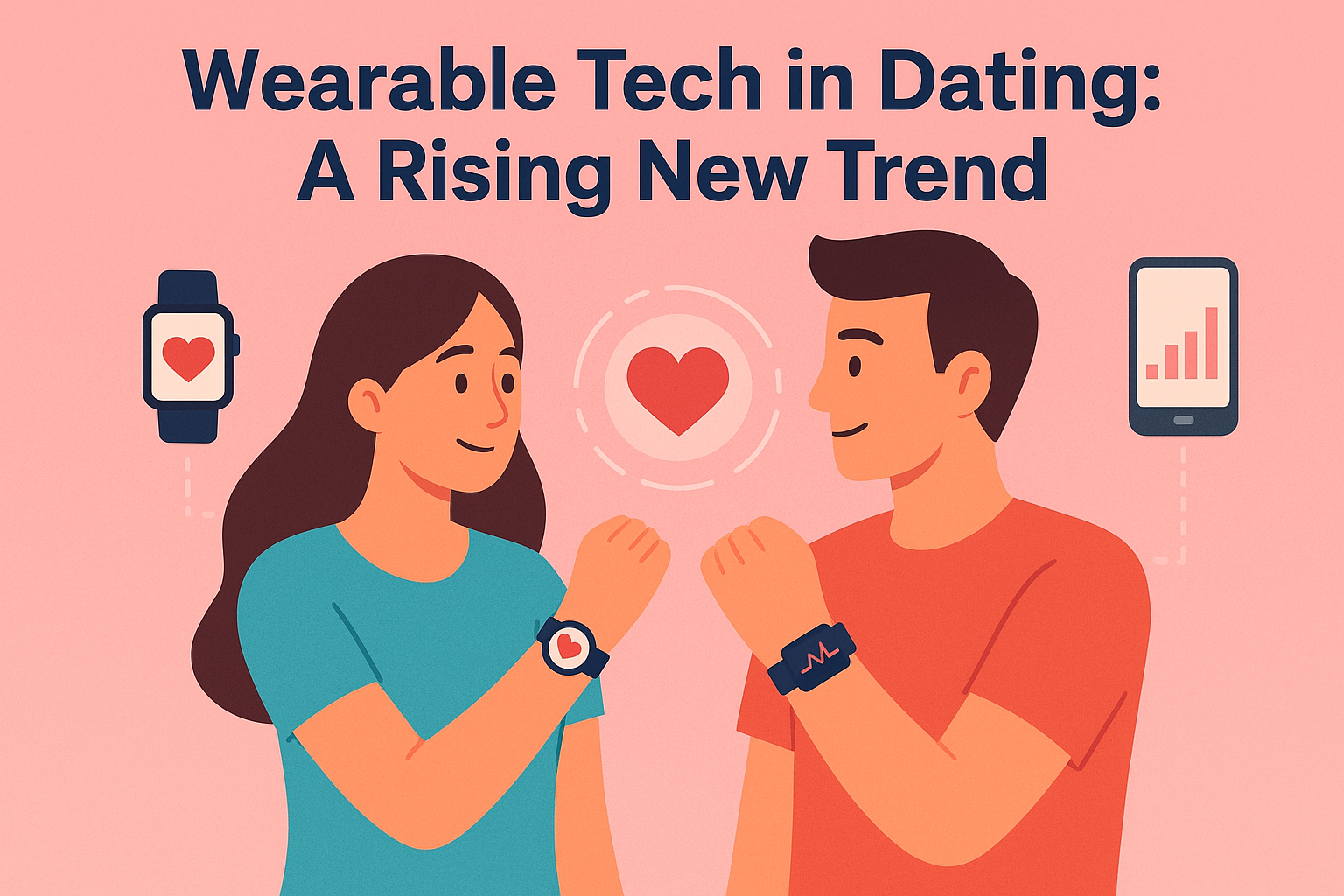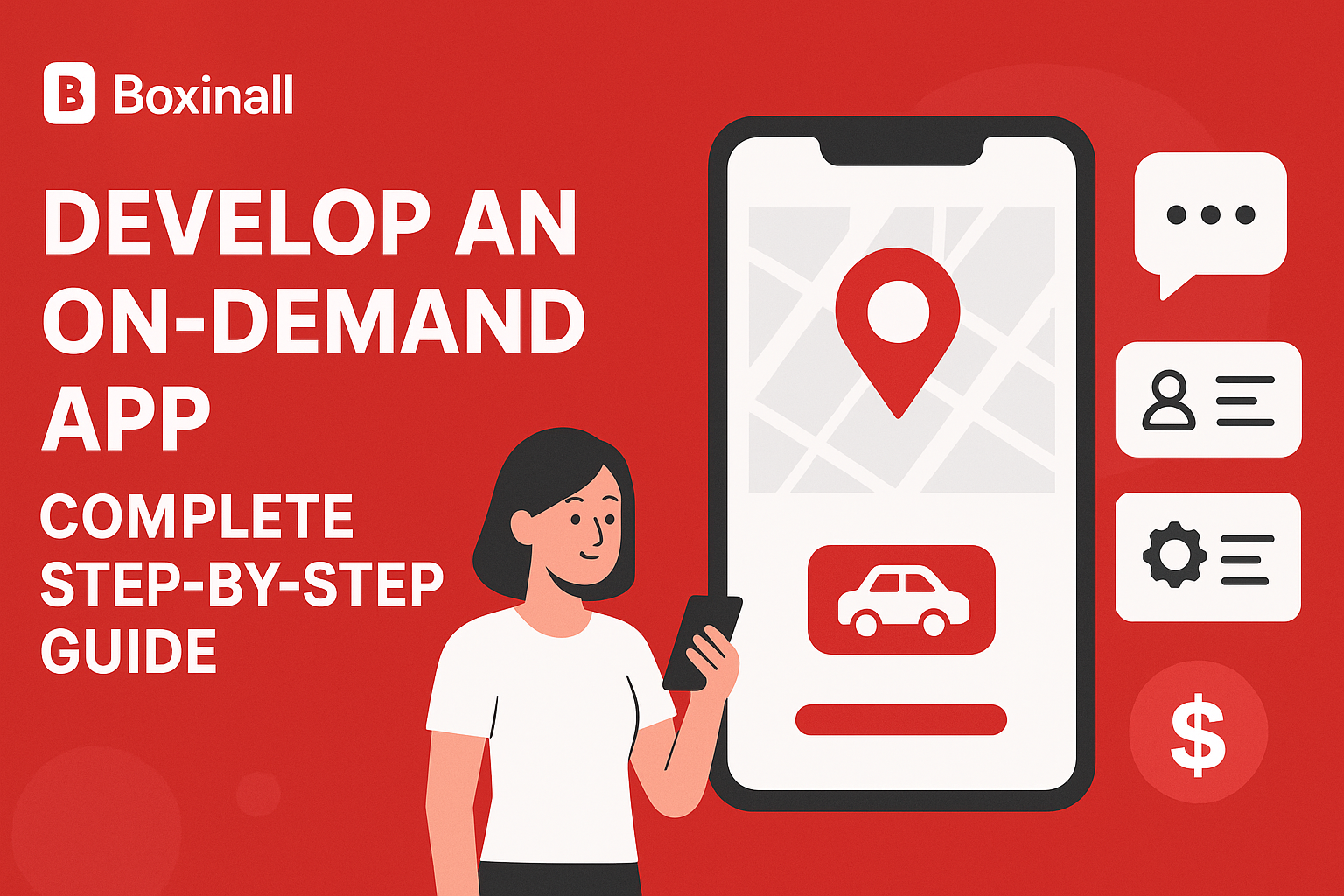Key Takeaways
- Wearables revolutionize dating by using real-time biometric data (activity, stress, sleep) to ensure authentic, lifestyle-aligned, and deeply compatible matches.
- The technology offers powerful business benefits: higher user engagement, verified data for better algorithms, and strong premium revenue streams.
- Users gain safety features (real-time alerts) and effortless, personalized matching based on actual daily habits, not fake profiles.
- Matchmaking advances from profiles to emotional compatibility, linking users based on shared energy levels and biometric-driven lifestyle rhythms.
- Key challenges include ensuring data privacy, compliance (GDPR), seamless compatibility across all devices, and maintaining long-term user engagement.
Introduction
Dating has come a long way—from meeting in real life, being introduced by friends, to swiping on apps. Now, the next frontier is coupling dating with the kind of data only your body can generate. With the proliferation of smartwatches, fitness bands, health rings, etc., wearable tech is beginning to reshape how people find and connect with compatible partners.
This isn’t just convenient—it’s transformative. Devices can track steps, sleep, heart rate variability, stress patterns, even location. When those data streams get integrated into dating platforms, they open up new possibilities for authenticity, safety, matchmaking precision, and user experience.
Let’s dive into how wearable tech is emerging in dating, what benefits it brings (for users and businesses alike), where the pitfalls are, and what the future might hold.
What is Wearable Tech in Dating Apps?
Wearable tech in the dating world refers to integrating devices like smartwatches (e.g. Apple Watch, Samsung), fitness trackers (Fitbit, Garmin), smart rings (e.g. Oura), etc., with dating platforms. These devices collect biometric, lifestyle, and location data in real time—activity levels, sleep and rest cycles, stress/heart rate variability, etc.—which can be used to enhance how dating apps match people and provide more meaningful, authentic connections.
Key usages include:
- Matching users not just on profile statements or pictures, but on actual habits and patterns.
- Monitoring emotional or physiological states (like stress or energy levels) to better understand compatibility.
- Safety features during in-person dates, e.g. real-time alerts or location tracking via the wearable.
- Suggesting date ideas or interactions based on how people are feeling or behaving (e.g., mood, energy) rather than generic prompts.
Why It Matters: Benefits of Wearables in Dating
For Users
- Authentic, Verified Compatibility
Traditional dating profiles often idealize or exaggerate lifestyles. Wearables provide objective, continuous data—how active someone really is, when they sleep, how stressed they get, etc. That helps match people whose reality aligns. - Lifestyle Matching & Alignment
If you’re a morning jogger, or someone who values a regular sleep schedule, or someone with low stress and high activity, wearable tech can help you find someone with similar rhythms. Those shared routines often matter more than static self-descriptions. - Improved Safety & Peace of Mind
When meeting in person, there’s always some risk. Wearables can support safety: sending alerts, location tracking, or detecting elevated stress. This adds a layer of reassurance. - Effortless & Personalized Matching
Rather than filling long questionnaires or waiting for matches based on vague profiles, wearables let matchmaking become more passive—your device feeds in data, and your app uses it. It reduces effort and increases relevance.
For Businesses & Platforms
- Higher User Engagement
With wearable integration, the app isn’t just something you open occasionally—it can become integrated into your daily life. Notifications, insights, matching prompts based on your daily behavior keep users returning. - Better Data for Better Algorithms
Rather than relying on self-reports or photo-based impressions, apps can use real behavioral data. That leads to more accurate matching, better retention, lower churn, and happier users. - New Monetization / Premium Features
Advanced compatibility matching (using biometric data), real-time insights, premium safety or date suggestions, customized experiences—these can be packaged as premium offerings. Businesses get stronger revenue pathways. - Market Differentiation
In a crowded dating app marketplace, integrating wearables is a way to stand out. It signals more than just superficial matching—it shows tech-forward, health/lifestyle alignment, safety conscious positioning.
How It Works: Practical Implementation
If a dating app or platform wants to integrate wearable tech effectively, there are several key steps and considerations. The reference article outlines a good roadmap. (JPLoft)
| Step | Description |
|---|---|
| Step 1: Define which data to collect | Decide which metrics matter: steps, heart rate, sleep quality, stress/HRV, location. Also define which are essential for matching vs “nice to have.” |
| Step 2: Select the wearable devices / platforms | Pick devices with open and robust APIs (e.g. Apple HealthKit, Google Fit) so integration is smooth. Prioritize widely adopted devices first. |
| Step 3: Build secure API integration | Make sure data flows reliably and in real-time (as practical), from device → wearable platform → your app. Encryption, secure data transfer, authentication are key. |
| Step 4: Privacy, permissions & legal compliance | Users must consent to share their data. Data must be stored/encrypted safely. Be aware of/regulatory requirements (GDPR in Europe, HIPAA if medical data involved, etc.). |
| Step 5: Matchmaking algorithm design | Use collected data intelligently—for example, match people with similar activity or energy rhythms; consider stress patterns; use location/proximity in a dynamic way. |
| Step 6: Real-time notifications / insights | Send suggestions based on current energy or mood; suggest date ideas when someone is trending energetic; adapt when stress is high. |
| Step 7: Test & optimize experience | Continuous testing: Is the sync reliable? Is data accurate? Is the UI simple, digestible? Collect user feedback. |
| Step 8: Expand & evolve features | Once core features are stable, explore new things: wearable-driven virtual dates, fitness or wellness challenges between matches, predictive matching based on long-term patterns. |
Challenges & Pitfalls
No emerging trend is without hurdles. Wearable tech in dating faces several challenges that must be managed carefully:
- Data Privacy & Trust
Sharing biometric, health, location, stress or mood data is deeply personal. Users need assurances: what data is collected, how it’s used, who sees it, how long it’s stored, how it’s protected. Lack of transparency can erode trust fast. - Regulatory and Legal Compliance
Different regions have different laws: GDPR in the EU, CCPA in California, etc. Also, if the data is health-sensitive, there may be requirements similar to medical data laws. Ensuring compliance adds complexity and cost. - Device Compatibility & Fragmentation
There are many wearable brands and models. Ensuring your app works smoothly across them (in terms of data access, sync reliability, battery usage) can be complex. Prioritizing popular devices helps, but still a technical challenge. - Real-Time Syncing & Data Accuracy
If data lags, misreports, or isn’t reliably updated, the user experience suffers. Users expect immediate or near-real-time feedback—delays kill the utility. Also, wearables themselves have limits (battery life, sensor precision). - Engagement Over Time
The novelty of wearable-driven features may attract users initially, but sustaining interest requires ongoing value. If after a while the user doesn’t see improvement or benefit, they might disconnect or stop sharing data. Gamification, evolving features, updates are needed. - User Interface (UX) Complexity
Not all users are tech-savvy. Overwhelming them with graphs, metrics, or options can backfire. The UI must make the wearable data meaningful, but simple—highlight what matters for matching or experience, without making the user feel lost. - Hardware Limitations
Battery life, sensor accuracy, wearable adoption (not everyone has a watch or ring), connectivity issues—all of these hardware realities can limit how rich/real-time the experience can be.
What the Future Looks Like
Wearable tech in dating is still early, but there are exciting possibilities ahead. Some of the forward-looking trends include:
- Mood & Emotional Intelligence Detection: Devices may get better at inferring mood or emotional state (from biometrics, voice, etc.), allowing apps to suggest matches or interactions when you are emotionally open.
- Predictive Matching & Pattern Recognition: Over longer time windows, the system might detect what kind of people or behaviors make you happy, relax you, energize you—and proactively suggest matches accordingly.
- Integration with AR/VR & Real-World Context: Think about AR glasses or smart glasses showing compatibility info in real-life encounters; wearables that buzz when you cross paths with someone who shares your lifestyle rhythm.
- Wellness & Growth-Oriented Matching: Not just matching on static traits, but shared growth goals—wellness, sleep hygiene, stress management, etc.—becoming central in connecting people.
SEO / Marketing & Business Implications
For companies, developers, and marketing teams, wearable tech in dating has some strategic implications:
- Positioning & Branding: Platforms that integrate wearable data can brand themselves as more authentic, more lifestyle-oriented, more safety-centric. That can appeal to users tired of superficial swiping culture.
- Premium Features & Tiering: As noted, features like advanced biometric matching, early access to insights, safety monitoring, and personalized date suggestions can be monetized. Freemium + subscription + premium add-ons is a likely model.
- Acquisition & Retention: Users who sync wearables are likely more invested (already using devices, caring about health/wellness). Those apps have better retention if user value is clear. Also data-driven insights allow personalization, which improves retention.
- Partnerships & Ecosystem: Dating apps might partner with wearable manufacturers, health platforms, wellness brands, or even insurance companies. Such partnerships can help with credibility, device access, and added features.
- Privacy as Competitive Edge: Given the sensitive data involved, companies that do privacy right (transparent policies, strong encryption, user control) may win trust and differentiate from competitors.
How to Get Started: For Developers / Entrepreneurs
If you are a team building a dating app (or thinking of pivoting), here are practical pointers:
- Start simple, with core metrics: Maybe begin by integrating basic wearable data like steps or sleep. Get that stable. Then gradually add more advanced biometrics.
- Prioritize popular platforms: Integrate with Apple HealthKit, Google Fit. Or popular wearables with well-documented APIs. These give you wide coverage and lower initial development friction.
- Design UI/UX with clarity: Make wearable-based suggestions and matches easy to understand. Use visuals, simple comparisons (“Your daily energy matches 80% with this person”) rather than raw metrics.
- Transparency & Consent: From the onboarding, be clear what data you’re collecting, why, how it will be used, who will see it. Let users control how much they share (opt-in/opt-out).
- Invest in Data Security & Compliance: Encryption, safe storage, regular audits, anonymization if possible, adherence to regional laws.
- Monitor User Behavior & Feedback: Use analytics to see which wearable-based features are used, which are ignored, where users drop off. Iterate.
- Think long-term evolution: Gamification, social features, wellness challenges, emotional matching—all can enrich the experience and keep users engaged over time.
Conclusion
Wearable tech in dating is more than a novelty—it’s becoming a meaningful way to bring legitimacy, depth, and alignment to how people meet and connect. As users grow more health- and authenticity-conscious, the capability to match based on real behaviour (not just what someone says in a profile) will likely become a standard expectation.
For businesses: this is an opportunity to lead rather than follow. For users: this could mean safer, more compatible, less superficial connections.
If you’re exploring this space, the time is now. Wearables are not futuristic—they’re here. And they have the potential to reshape the future of romance.
If you like, I can also prepare a version of this blog optimized for Indian audience, or include images/infographics. Would that be useful?



